Explore Irish Town, one of the oldest streets in Gibraltar, and its fascinating history
By Nick Nutter | Updated 11 Apr 2024 | Gibraltar | Places To Go |
Login to add to YOUR Favourites or Read Later
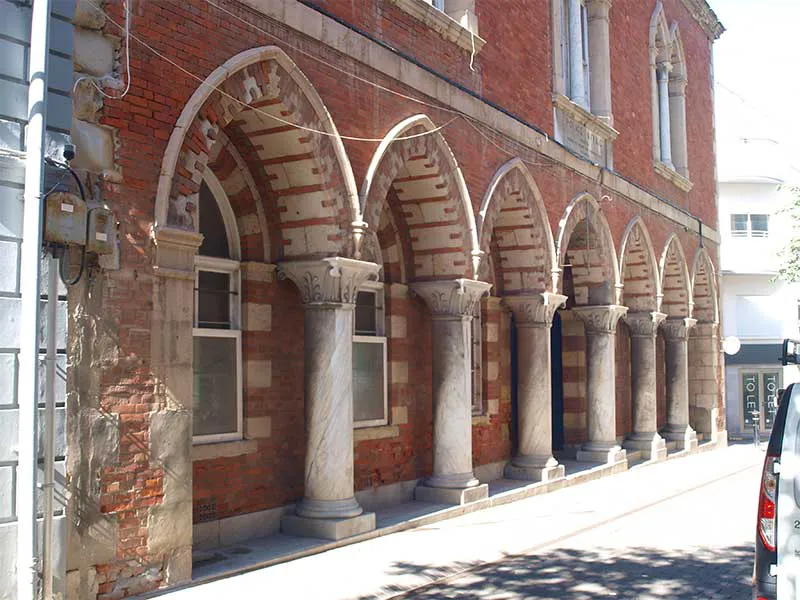
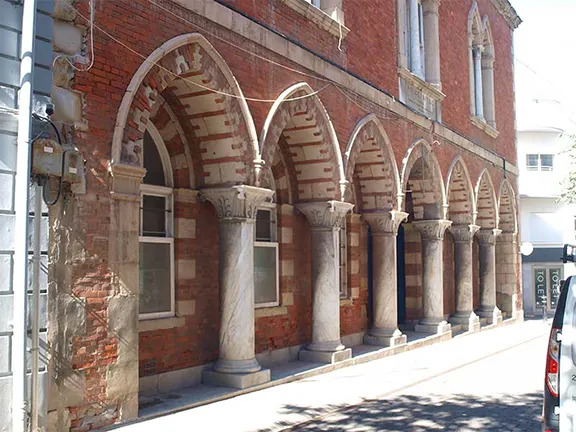
Police HQ
Irish Town is one of the oldest streets in Gibraltar. It runs from Main Street, just south of Casemates Square to John Mackintosh Square, parallel to the heavily fortified Line Wall.
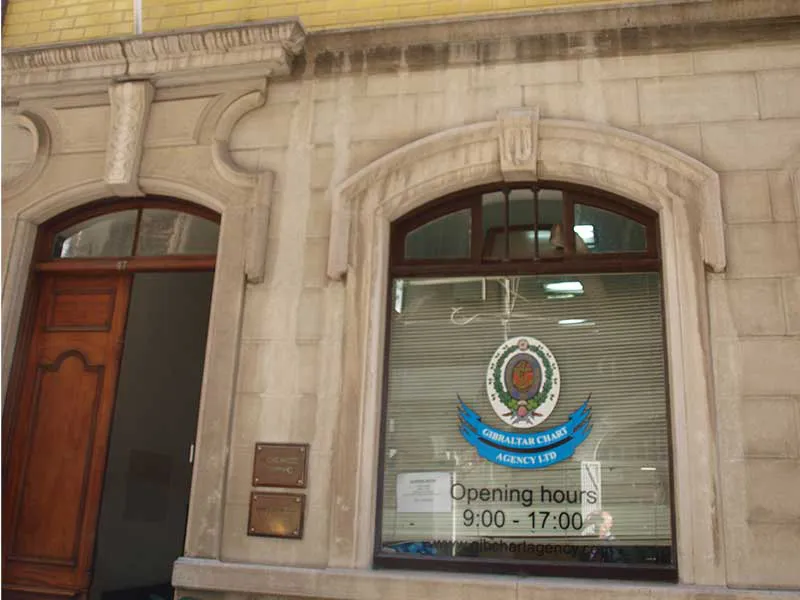
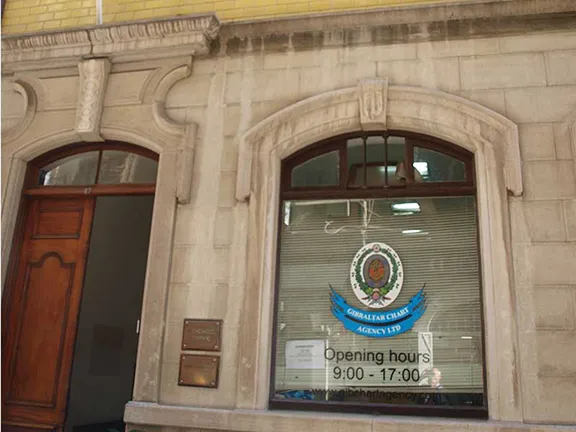
Chart Agency
Today, it is a pedestrian precinct with bars, restaurants and coffee shops. Scattered between them are old established businesses such as the Gibraltar Chart Agency, suppliers of Admiralty charts, produced for over 200 years, a Moroccan fruit and vegetable shop and a ‘proper’ ironmonger. The latter two looks as if they have been there almost as long as the Admiralty have been producing charts.
Many people wonder how Irish Town acquired its name.
Despite its prominence as one of the main streets on The Rock, there is some controversy as to how the street acquired it’s name.
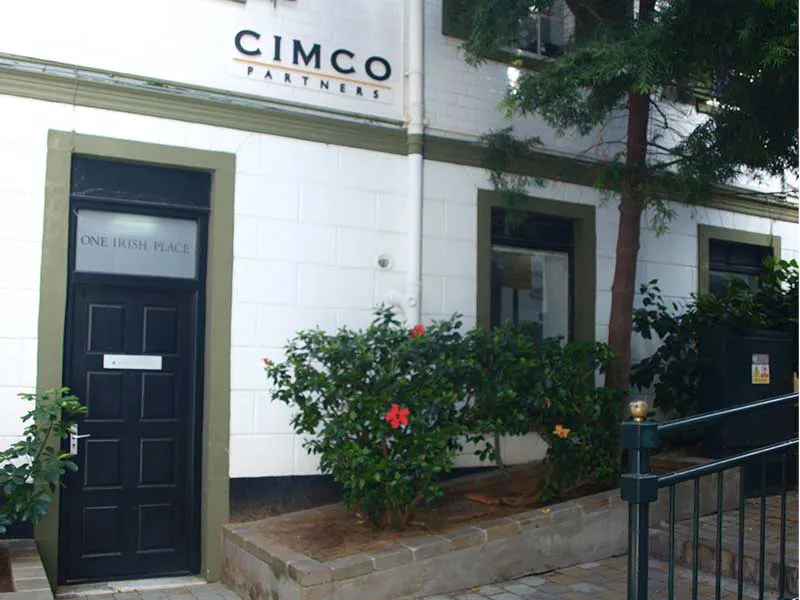
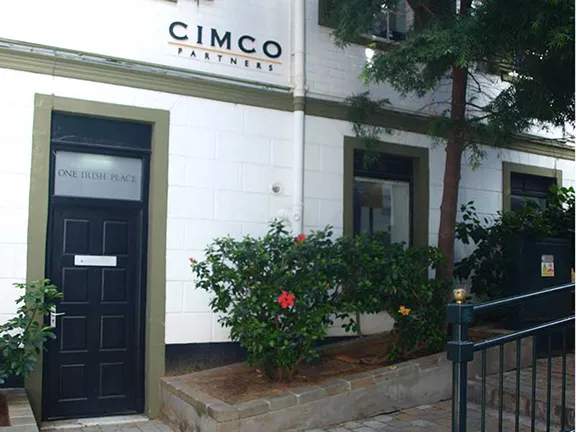
Corner Irish Town Irish Place
Before the British took over Gibraltar in 1704, the street was called Calle de Santa Anna after a chapel situated at the south end of the street.
In 1581, the chapel was expanded, and it became the Convento de la Merced. The friars of the Mercedarian Order saved many Christians taken as prisoners by the Barbary Pirates by paying the ransom the pirates demanded for their release. The building was largely destroyed along with the rest of the street during the Great Siege of 1779 – 1783.
The building currently standing at the junction of Irish Town and Market Lane is known as The Cloisters, and two of the 16th-century columns of the cloister that was attached to the convent are still standing, supporting the north wall of Cork’s Wine Bar and Restaurant.
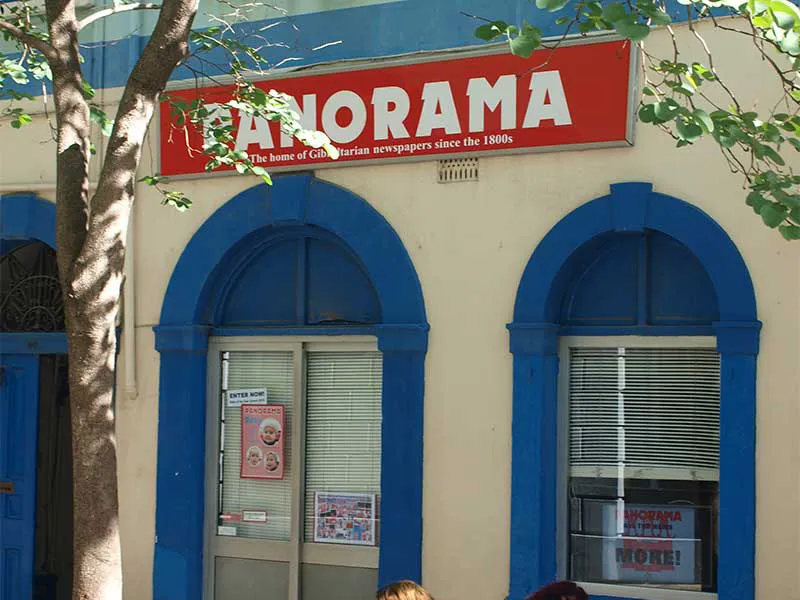
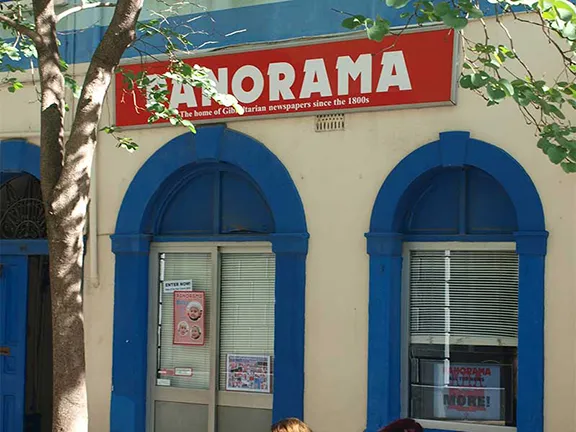
Panorama Building
After 1704, many of the Spanish residents, including the good friars, left Gibraltar.
The convent was requisitioned by the Royal Navy and became a storehouse and accommodation for the victualing clerks. In those days, street signs were not used. Being primarily a military establishment, the officers’ quarters were numbered. Barracks, fortifications and warehouses all had names. Civilian housing was considered of no importance.
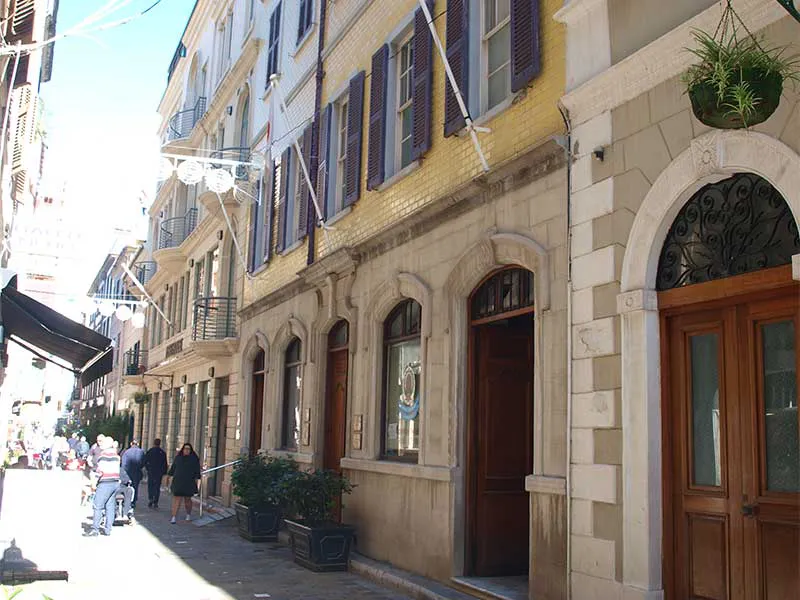
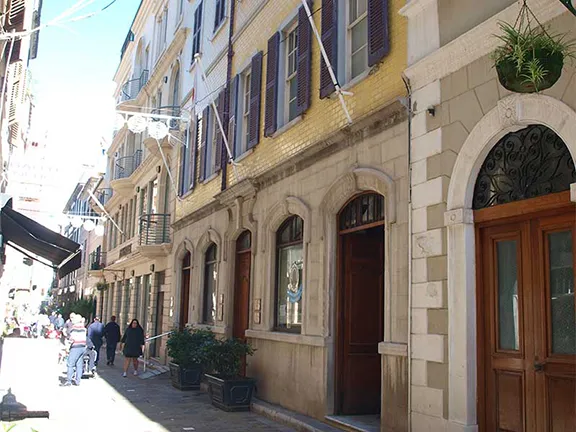
A Tiled Facade
Commerce began to develop, and civilians from other countries started to arrive and establish themselves in business or as workers.
A contingent of Portuguese people close to what is now called Crutchetts Ramp, which is off Main Street opposite Irish Town near Casemates Square. That area became known as Portuguese Town.
Some Irish people congregated in the unnamed street adjacent to Line Wall. So that area became known as Irish Town. The question is, ‘Where did those Irish people come from?’
The most likely contenders are two shiploads of Irish women immigrants who arrived between 1727 and 1728. They had been shipped in to entertain the troops.
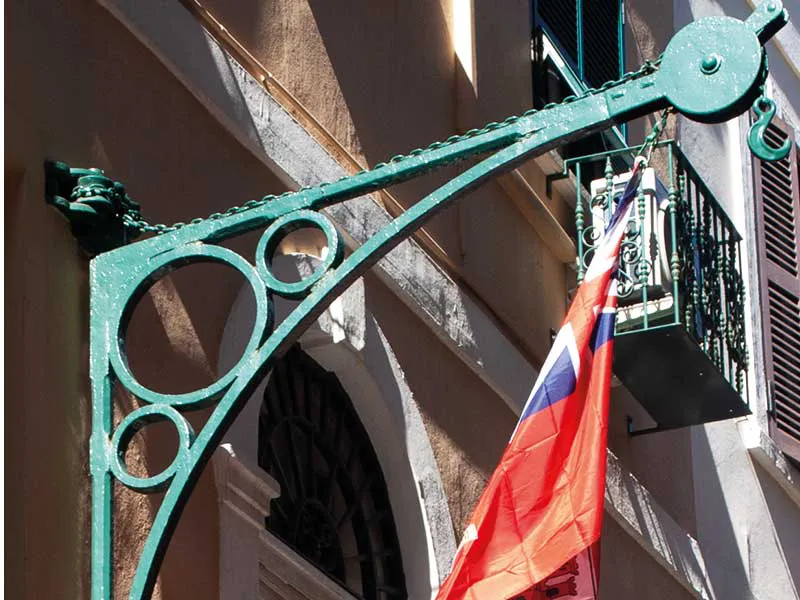
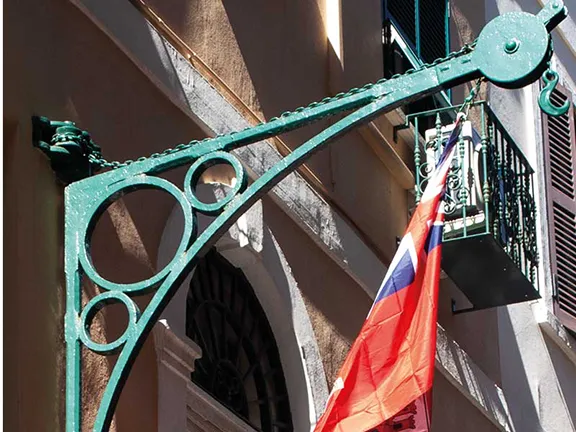
19th Century Winches
Between February and June 1727, during the Anglo Spanish War (1727 -1729), the Rock was under siege by between 12,000 and 25,000 Spanish troops determined to place Gibraltar back in Spanish hands. The defenders numbered 1,500 at the beginning of the siege rising to 5,000 towards the end.
Conditions for the troops were incredibly hard. They were under constant bombardment for four months. A historian, known only as S.H. wrote at the time:
‘A Soldier, not three minutes on his Post, must be peeping over the Wall at the Prince's Line, his curiosity cost him his Head, which a Cannon Ball made bold to carry away without leave. Another, just come on Duty, lost his fire lock [sic] off his shoulder in the same Manner’
Not surprisingly, the soldiers turned to drink over and above their allowance that S.H. tells us was ‘a pint of Wine per Day, to prevent their frequent drunkenness.’ Drunkenness on duty was an offence and punishments were harsh. The failure of a sortie in April of 1727 was laid at the doors of the gunners who were drunk.
Towards the end of the 18th century, drunkenness was increasingly becoming a problem and, in 1802, Prince Edward, Duke of Kent and Streatham, Queen Victoria’s father, was appointed Governor of Gibraltar with orders to restore discipline.
This was not Edward’s first taste of Gibraltar. In 1790, he had been sent to the Rock as an ordinary officer after disgracing himself as Colonel of the 7th Regiment of Foot. He was joined there by his infamous paramour, Madame de Saint-Laurent, whom he had smuggled into the territory against the wishes of George III, his father.
Edward found the heat in Gibraltar oppressive and applied for a posting to Quebec. He returned from Canada in 1800, expecting his next appointment to be Lord Lieutenant of Ireland. The War Office, however, had other ideas and he was sent to Gibraltar as Governor, a post he took up in 1802.
Unfortunately, the Duke’s harsh disciplinary methods precipitated a mutiny that erupted on Christmas Eve 1802 in his regiment, the 7th, and in the 25th Regiment.
Edward's brother, the Duke of York, was not pleased and, as Commander in Chief of the Forces, ordered Edward back to London.
Edward was recalled to London in May 1803 having failed to solve the problem.
It was hoped that the introduction of the Irish women would help to relieve the problem. Whether it did or it didn't is not recorded. What is recorded is the fact that Irish Town became known as a street of ill repute and the name stuck.
The buildings you see today all date from the 18th and 19th centuries, built after the Great Siege. Amongst them, the threads of history run deep.
In 1759, a synagogue was established at 91 Irish Town, Es Hayim, the Tree of Life.
It was screened from the street since the Treaty of Utrecht stipulated that neither Jews nor Moors could live in Gibraltar. It was rebuilt after the Great Siege and is still one of Gibraltar’s four synagogues.
The most prominent building on the street is the red brick Victorian police station on the corner of Cloister Ramp and Irish Town. It served as the headquarters of what became the Royal Gibraltar Police from 1864 until 1984.
The RGP, formed in 1830, is the oldest police force in the Commonwealth outside the UK. It was granted the prefix ‘Royal’ by Queen Elizabeth in 1992.
The building opposite the police station was a bank in the mid 19th century owned by Jerome Saccone. In 1888, it became the Gibraltar branch of the Anglo-Egyptian Bank, a forerunner of Barclays.
In 1885, the Spanish language newspaper ‘ El Anunciador’ occupied number 95 Irish Town. The paper was printed there until 1940. Today the ‘Panorama’ newspaper is produced in the same building.
At the corner of Irish Town and Irish Place is a building that housed the Spanish Consulate General until 1954 when, following a visit by Queen Elizabeth to the Rock, the Spanish government took offence and removed their Consul. To this day, Spain has no Consul in Gibraltar.
At the northern end of Irish Town, on the facades of Numbers 11, 17 and 46, you can see the winches used to haul produce into warehouses. Number 57 is a 19th century Merchant House. Although the winches are gone, you can still see the large doors on the first floor giving entrance to the storerooms. There were tobacco factories, and coffee roasting works as well as general-purpose produce stores.
Enter the shop at Number 33 and look at the large fanlight made of coloured glass, and the ornate ceiling. The building was once the ‘Salon Ideal’, a music hall, and later it incorporated Gibraltar’s first cinema.
Number 47 stands out with its yellow tiled façade from the first floor to the roof and its ornate drainpipes. Number 47 is the office of Smith Imossi who was the agent for the P & O line whose first service to Gibraltar was in 1837. They continue to operate as Ships and Cruise Liner Agents. On the ground floor is the Gibraltar Chart Agency.
In more recent times, in the 1960s a certain Mr Marlow established the first English fish and chip shop in Irish Town, at number 39. That shop is long gone but his son, Steve, continues the family tradition from Marlow’s Fish and Chip shop at Los Hidalgos in Manilva Municipality.
Visiting Gibraltar and wondering how best to see its sights? A great way to access Gibraltar's top attractions is with the 1-day Gibraltar Pass.
This digital pass provides entry to over 15 of the territory's attractions including those in the Upper Rock Nature Reserve. You'll get cable car access and free bus transport from border and cruise port to city centre & cable car (plus other freebies and discounts!).
Best of all, you can access the pass via your mobile phone and just scan it at the included attractions, making it convenient and hassle-free.
Get the Gibraltar Pass in advance here:
If you're based in Costa del Sol, an easy way to visit Gibraltar is on a Malaga to Gibraltar Day Tour.
Read our articles for more on visiting Gibraltar: